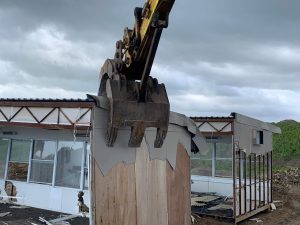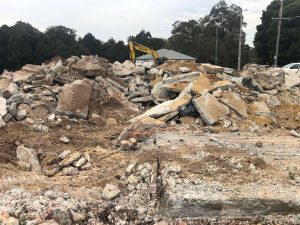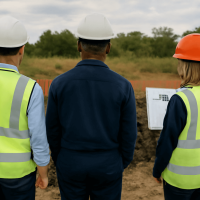Understanding the Demolition Process: A Guide

Demolition is more than just tearing down buildings. It’s a complex process that requires careful planning and execution. Whether you’re a homeowner or a business owner, understanding demolition is crucial. It involves various methods, each suited to different types of structures.
Safety is a top priority in demolition. Proper precautions and equipment are essential to protect people and property. Costs can vary widely, influenced by factors like size and complexity. Knowing what to expect can help you budget effectively.
This guide will walk you through the demolition process. From choosing the right contractors to understanding environmental impacts, you’ll gain valuable insights.
What Is Demolition? An Overview
Demolition is the controlled process of dismantling structures. It’s about safely removing buildings for redevelopment or renovation. Proper planning and skilled execution are vital.
Various methods are used in demolition. Some employ heavy machinery, while others might use explosives. The chosen method depends on the structure type and location. Key components of demolition include:
- Careful site assessment
- Obtaining necessary permits
- Safe removal of debris
It’s crucial to follow safety regulations. Demolition can pose risks to workers and nearby areas. Using the right techniques ensures minimal disruption and hazards.
Types of Demolition: Residential, Commercial, and More
Demolition comes in several forms, each with its unique requirements. Residential demolition is common for homes needing removal or renovation. It often involves small-scale structures and requires precision. Commercial demolition is more complex. It includes larger buildings like offices and malls. These projects demand advanced planning and specialized equipment due to their scale. There are also selective demolitions. This method involves removing specific parts of a structure while preserving others. It’s often used in remodels to keep historical elements intact.
Key types of demolition include:
- Residential demolition
- Commercial demolition
- Selective demolition
Choosing the right type depends on project needs. Size, location, and goals will influence the decision.
The Demolition Process Step-by-Step
The demolition process begins with a thorough site assessment. Experts evaluate the structure and the surrounding area for potential hazards. This step ensures that the demolition is both safe and efficient. Permits are crucial for legal compliance. Obtaining these permits can be complex, depending on local regulations. It’s a step that should never be overlooked or rushed. Once permits are secured, planning the demolition strategy is next. Determining the method, whether mechanical or implosive, is important. Considerations include safety, efficiency, and environmental impact.
Preparation of the site involves setting up barriers and removing hazardous materials. This step is vital for protecting both workers and the environment. Safety measures must adhere to strict standards. The actual demolition involves tearing down the structure using chosen methods. Typical methods may include:
- Mechanical demolition with excavators
- Implosive demolition using controlled explosives
After the structure is down, debris removal follows. Efficient waste management is essential for minimizing environmental impact. Recycling and salvaging materials play a crucial role here. Successful demolition projects conclude with site cleanup. This step restores the area for future construction. It ensures the site is safe and ready for redevelopment.

Safety: Protecting People and Property
Safety in demolition is paramount. It involves rigorous planning and adherence to protocols. This ensures both people and property are safeguarded throughout the process. Key safety measures include the use of protective gear. Workers must wear helmets, goggles, and sturdy footwear. These items are essential for preventing injuries on site. Regular safety training keeps workers informed and alert. Teams should perform routine checks and risk assessments. Key safety practices include:
- Proper use of demolition equipment
- Environmental hazard management
- Emergency response planning
Effective communication is crucial among all team members. A clear chain of command helps in coordination during the demolition. This minimizes confusion and ensures swift reaction to any issues.
Demolition Equipment and Technology
Demolition requires specialized equipment to ensure efficiency and safety. Tools vary based on project size and complexity. Excavators, bulldozers, and wrecking balls are common in this field. Advanced technology is enhancing demolition processes. Innovations like drones help with site assessments and monitoring. With these tools, precision and safety are increased. Key equipment includes:
- Excavators for heavy lifting
- Bulldozers for debris clearing
- Cranes with wrecking balls for large structures
- Drones for aerial surveys
These tools, coupled with skilled operators, streamline the demolition process. They ensure structures are dismantled effectively while reducing risks.
Choosing Demolition Contractors and Services
Selecting the right demolition contractors is crucial for a successful project. Experience and reputation should be top considerations. A skilled contractor will ensure safe and efficient work. Research is vital when choosing demolition services. Look for contractors with positive client feedback. Verify they have the necessary licenses and insurance coverage. Consider these factors when choosing a contractor:
- Experience in similar projects
- Compliance with safety standards
- Transparency in pricing
- Use of modern equipment
Building a good relationship with your contractor can enhance communication. It ensures that the project stays on track and within budget.
Costs and Pricing: What to Expect
Demolition costs can vary significantly based on several factors. The size and complexity of the structure heavily influence pricing. Larger or more complex demolitions typically incur higher costs. Consider the following when estimating house demolition prices:
- Structure size and type
- Location and accessibility
- Debris disposal and recycling
- Presence of hazardous materials
Obtaining multiple quotes from demolition contractors is advisable. This approach provides a clearer understanding of potential expenses. Understanding these cost factors helps in planning and budgeting effectively.
Environmental Considerations and Recycling
Demolition involves more than dismantling structures. Environmental impact is a critical concern. Proper waste management minimizes negative effects and promotes sustainability. Recycling materials like metal, concrete, and wood significantly reduces landfill waste. Key actions for sustainable demolition include:
- Identifying recyclable materials
- Reducing dust and noise pollution
- Complying with environmental regulations
Partnering with experts ensures adherence to eco-friendly practices. This approach helps protect the environment while conserving resources. Sustainable methods also promote a positive community impact.
Frequently Asked Questions: Demolition Near Me
Finding local demolition services answers many queries regarding cost, safety, and timelines. Here’s a quick list of common questions and their focus:
Are there demolition contractors nearby?
Yes—if you’re in Western Australia, Peel Resource Recovery offers trusted, local demolition services backed by over 50 years of industry experience. Our team handles residential, commercial, and industrial projects with a focus on safety and environmental compliance. Click here to get a free Demolition quotes for your residential or commercial projects.
What are local house demolition prices?
Costs can vary based on structure size, location, material handling, and site complexity. Peel Resource Recovery offers transparent quotes tailored to your site conditions, helping you avoid unexpected charges
How do I ensure safe demolition?
Always hire licensed professionals with proven safety systems in place. Peel Resource Recovery follows strict WA regulations and prioritises site safety, asbestos handling, and environmental protection in every project.
Conclusion: Planning for a Safe and Successful Demolition
A well-planned demolition ensures safety and efficiency. By understanding each aspect, you can make informed choices. Choose reputable contractors and prioritize safety regulations for a seamless project. Embrace innovation and sustainability for the best results.



